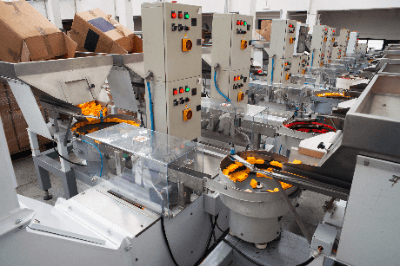What Is an Injection Molding Machine?

An injection molding machine is a machine that performs injection molding of plastic and other resins. The manufacturing process of injection molding begins by pouring heated, softened resin into a mold. The mold is then subjected to high pressure, and the cooled product is removed.
Injection molding is the most commonly used method of molding plastics and other resins. Many familiar products, such as stationery and cell phone parts, as well as automotive and home appliance parts, are produced by injection molding.
Uses of Injection Molding Machines
Injection molding machines are used to produce many household items. This is because injection molding machines specialize in the molding of resins. Injection molding machines can mold a wide range of resin materials, including thermosets, thermoplastics, and elastomers.
Products manufactured by injection molding machines include automotive interior and exterior parts. Most automotive interior and exterior parts are molded on injection molding machines. In addition, most exteriors of everyday products such as electric fans, microwave ovens, televisions, and washing machines are also produced by injection molding machines.
Injection molding machines are indispensable in the manufacture of familiar products, from small parts to large products.
Structure of Injection Molding Machines
The structure of an injection molding machine is divided into an “injection section,” which injects resin, and a “mold clamping section”, which molds the product. In the injection section, the resin is melted at a high temperature of approximately 200°C and poured into the mold. The flow is automated by simply setting the amount and temperature to be poured into the machine.
The mold is installed in the mold clamping section. The mold must be moistened with a mold release agent and warmed up to prevent resin from sticking to it. Resin is poured into the mold from the injection section, and the mold is clamped under high pressure for molding.
After molding, the resin is cooled to completion. The removed resin has burrs, which are removed and inspected before it is made into a product.
Types of Injection Molding Machines
Injection molding machine types are classified according to the materials to be molded and the structure of the injection molding machines. There are two main types of materials used by injection molding machines: thermoplastics and thermosetting plastics.
- Thermoplastics deform when heat is applied.
- Thermosetting plastics harden when heat is applied.
The most common injection molding machines are for thermoplastics. There are also three types of injection equipment: plunger type, pre-plunger type, and screw type.
- Plunger Type
Material is injected using a piston-type plunger. This method was common until the 1960s but is now used only for special applications. - Pre-Plunger Type
This method combines two cylinders. Since two cylinders are used, a high cycle time is possible. - Screw Type
A single screw is used to measure and inject material. Also called the screw-in-line method, this is the most common method used today.
In selecting an injection molding machine, it is necessary to have a good understanding of the type of material and structure used. This is because if the combination is not right, there is a possibility that the product will not be molded well.
In addition, care must be taken because failure to mold the product will further result in huge costs.
Other Information on Injection Molding Machines
Advantages and Disadvantages of Injection Molding Machines
The advantage of injection molding machines is their extremely high production efficiency. When manufacturing small parts, injection molding machines are designed to produce as many products as possible with a single mold to achieve high production efficiency.
Injection molding methods are simple, and injection molding machines are highly automated. The major advantage of injection molding machines is their extremely high productivity.
The disadvantage of injection molding machines is that they are costly. Injection molding machines must be strong enough to withstand the high pressure of the injection section. In addition, the mold clamping section requires the production of high-precision molds.
To meet the requirements of high strength of the injection section and high precision of the mold, development and processing costs are incurred. Since individual molds are manufactured for each desired product, a large initial cost is required.